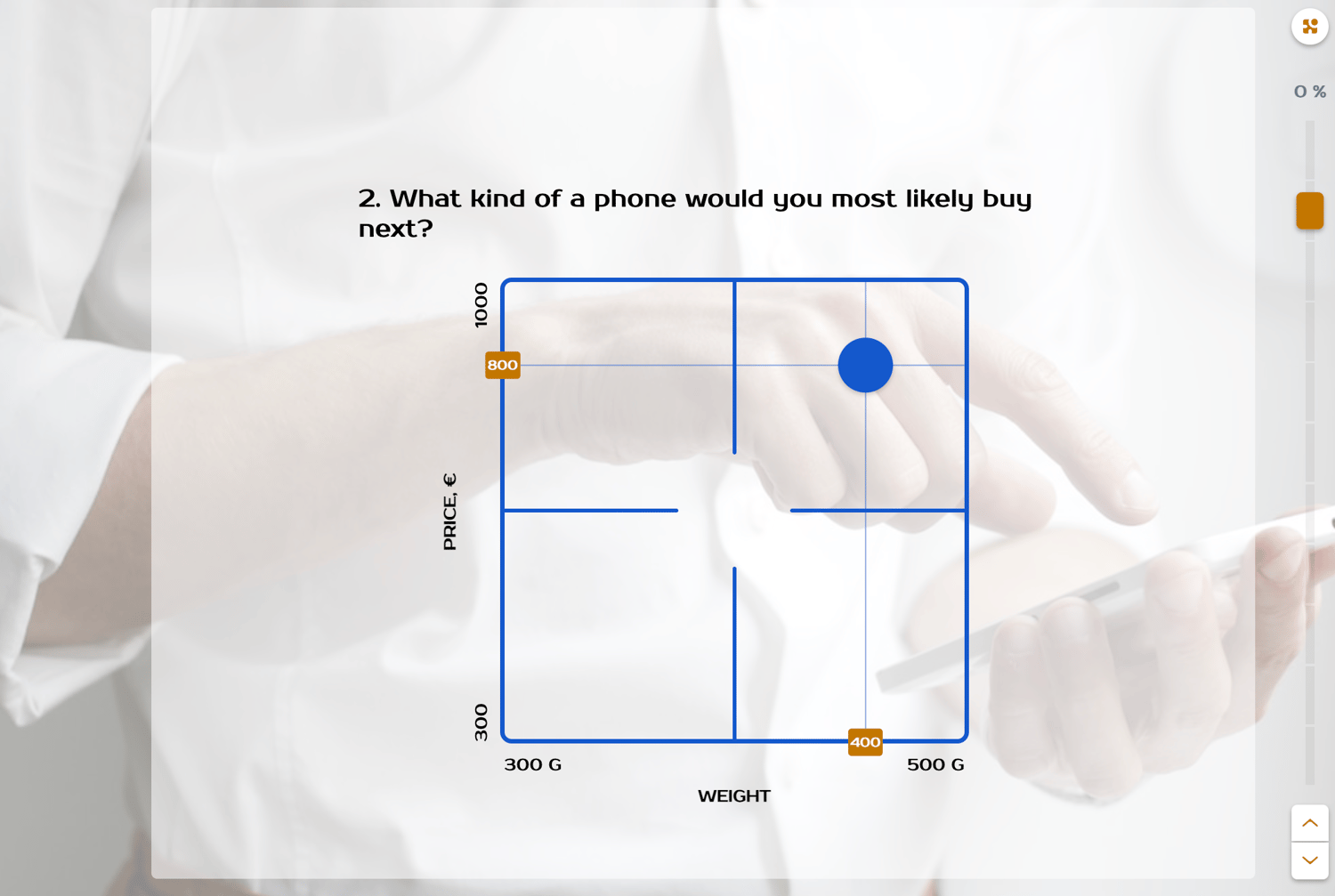Academic Research: 2-D Question in Market Research & Conjoint Analysis
New research - how market research industry can benefit of Zeffi's two-dimensional question type
Customer experience (CX) and customer preferences are both elements of wider customer awareness. Our customers are presently focusing more on CX than getting to know exactly what their customers would prefer, e.g. using methods of market research - that's why we highlight the new academic research that has shown Zeffi's two-dimensional question type is a noteworthy candidate for market research.
Researchers Selkälä and Reips have lately (2023) published a research(1 that shows Zeffi's 2-dimensional question type is very suitable for research that focuses on assimilation. In their research ZEF-method was highlighted as the most suitable research tool for research pursuing assimilation effect. Assimililation effect is often needed in purposes of market research and this is especially the case with conjoint analysis as researchers point out. In Conjoint Analysis focus is on making assimilations and comparisons of product attributes. This is something that Zeffi's comparative Z-scoring method has as one of its core capabilities.
This, combined with the relative response method of the ZEF method(2 opens up an interesting opportunity for studying the relative expectations of customers. This way, for example, the weight values of the feature options of a new product under development can be compared and the choices optimized so that their relative fit with the customer's preferences is as good as possible.
Conjoint analysis can consume lot's of time and energy for both the person conducting the survey and the respondent, and means to streamline it are certainly welcome. More often than in academic research in general, in market research one has to take into account the respondent's limited time. For example, a response time of tens of minutes is often not justified, or at least the survey implementer has to prepare for a clear drop in respondents during the survey. Missing data is not to anyone's advantage - so why not considering research economics from the respondents' point of view already in the planning phase of the study?
In conjoint analysis(3 product attributes, i.e. properties, are compared to each other and as a result of the research process the relative weights of the properties for decision making can be obtained. In the analysis, existing or possible future (hypothetical) product options can be compared to each other. Above mentined Selkälä's and Reips's article(1 highlighted namely 2-dimensional question type's suitability for conjoint analysis.
In the 2-dimensional question type in Zeffi the respondents are asked for their opinion on two dimensions at the same time. Applying the case example of Imthorn et al.(3, e.g. phone features could be compared to each other in Zeffi's four-field using the mechanism shown in the following figure. In such a procedure, product characteristics would be compared in pairs to identify the relationships between them, and the cognitive load of the respondents could be reduced not only by choosing a four-field as the question type(1, but also by dividing the respondent pool to random subgroups, each of whom would be asked their own part of the set of questions - not the entire set of research questions.
Figure 1. Survey respondent's view in the analysis of the relationship between phone's price and weight using a two-dimensional question type for Conjoint analysis.

In addition to conjoint analysis, many other methods are of course used in market research, and Zeffi's customers also use, for example, when considering product launches, even visual questions such as image choice to concretize product options and make it easier to choose between them. Such a layout can be implemented, for example, according to the example in Figure 2 below, where, despite its visuality, it also has opportunities for conjoint analysis.
Figure 2. An example of a visual way of collecting information about customer preferences.

Text analysis has its own chapter in market research, which we will write about later in another blog post. Of the methods, however, it should be mentioned that sentiment analysis, keyword analysis, adjective and verb recognition, and emotional profiling are key features of Zeffi in the market researcher's toolbox as well.
Sources:
(1 Selkälä, A. T. & Reips, U.-D. 2023. A new two-dimensional question format in web survey design: Assimilation and contrast effects. Methodological Innovations, 16(2), 186-200. https://doi.org/10.1177/20597991231179392
(2 Selkälä, A. T., Ronkainen, S. & Alasaarela, E. 2011. Features of the Z-scoring method in graphical two-dimensional web surveys: The case of ZEF. Qual Quant (2011) 45: 609–621. DOI 10.1007/s11135-010-9368-y
(3 Imthorn, M.; Kemp, R. & Nobel, I. 2016. Using Conjoint Analysis in Merger Control. Authority for Consumers and Markets Working paper. ISSN: 2352-0442
